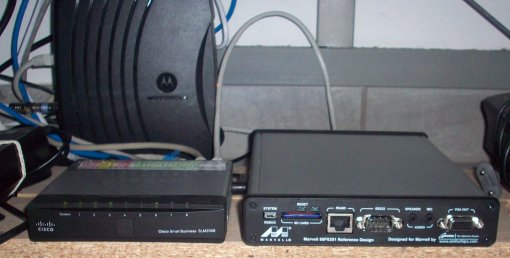So this is about a long-term gripe I have, working (mostly) from a Linux desktop since well over 15 years now – and that is, getting email to work as “it’s supposed to be”. Which is a royal pain in the rear.
Let me elaborate. Before smtp server admins became really anal about spam and were blacklisting dial-up and random IP addresses, you simply used your default sendmail or postfix setup that came with your distro and everything was fine and dandy. Email clients just delegated sending to that MTA subsystem. After that good old time was over, you usually needed a smarthost to authenticate against – if you were lucky, it accepted arbitrary From-addresses, so you could even use it for both work and private mail, or share your box’s setup with your room mate.
When those last loopholes got closed, using a system-wide MTA for outgoing mail on a desktop machine quite apparently became a very, very bad idea (conceptually, and in terms of effort involved to make it work). I guess that was when everybody but die-hard Unixers switched over to all-in-one solutions like Thunderbird, Evolution, or KMail – which came with built-in MTA support. Still, there were corner cases – like mailing out patches from git or quilt, or dishing out signed gpg keys after the last keysigning party, that were, um, kinda hard to make work.
Not surprisingly therefore, the command line utilities used for that, initially nicely adhering to the Unix toolkit approach, soon grew MTA features like a hacker grows a beard. With varying levels of quality, and feature-completeness – and usually – the horror! – with the option (or the requirement), to store mail passwords in cleartext configuration files.
I personally plead guilty of tweaking/enhancing TLS support in caff (CA fire-and-forget – a nice script for signing and mailing gpg keys), because I was using Gmail for my private mail, which required that. Similarly, folks added TLS support to git-send-email, and surely tons of other not-primarily-MTA programs.
The bad news? Well, at least the two examples I gave don’t verify the server’s TLS cert at all, exposing you to trivial man-in-the-middle attacks. Or have you never used those programs in a hotel WLAN, or on a conference?
The next nice feature of a proper MTA, namely queueing mail if there’s temporarily no net, or the remote SMTP server is down, is even harder to achieve for those little tools – usually, people just queue meta-tasks then (like “TODO: re-run caff when I finally get out of this plane / send out patches to Jeff, he needs it by Monday”) – what a sucky state of affairs, in this day and age.
So, how to fix that? Well, don’t replicate MTA features all over the place – use a local, per-user MTA, plus a mail queue, and have all those tools, and your MUA, use that. After playing with sendEmail a bit (and even adding TLS cert fingerprint verification), I re-discovered msmtp, which does one thing extremely well – sending email. Plus, it has built-in support for Gnome Keyring and the Mac OS X Keychain, so you neither have to constantly type your passphrase on the terminal, nor store it plaintext. And it does TLS validation, and also (optionally) fingerprint checking. And it comes with a script to manage a local, per-user mail queue.
Well, I didn’t so much like that script, for all the wrong reasons – mostly, I probably was looking for excuses to tear it down into pieces and hack up my own solution – being two much shorter (and admittedly almost feature-less) variants thereof, enqueue.sh and runqueue.sh. The former just grabs all command line arguments, plus all of stdin, and stuffs it into a maildir-like queue – employing another little gem called safecat. The latter periodically processes all files in the queue, and then calling msmtp using the canned args and standard input. And sleeps when you’re offline.
Have now happily configured all of mutt, caff and git-send-email to just use enqueue.sh as their “sendmail” equivalent –
~/.gitconfig:
[sendemail]
envelopesender = Thorsten
smtpserver = /home/me/bin/enqueue.sh
aliasesfile = /home/me/.mutt/aliases
aliasfiletype = mutt
~/.caffrc:
$CONFIG{'mailer-send'} = [ 'mailer', 'enqueue.sh -a gmail -f mail@for.me -- ' ];
~/.muttrc
set sendmail="enqueue.sh -a gmail "
There were two rather minor bumps, first was a missing safecat for opensuse – I resuscitated an old spec file from cthiel, and added it to my opensuse buildservice repo. Debian of course has a package. Next was that opensuse’s msmtp did not have gnome keyring support enabled, presumably because it drags in some subset of the gnome stack as requirements. Naturally, on my desktop system, that’s an ignorable concern, so that’s now forked and added to my buildservice repo, too.
